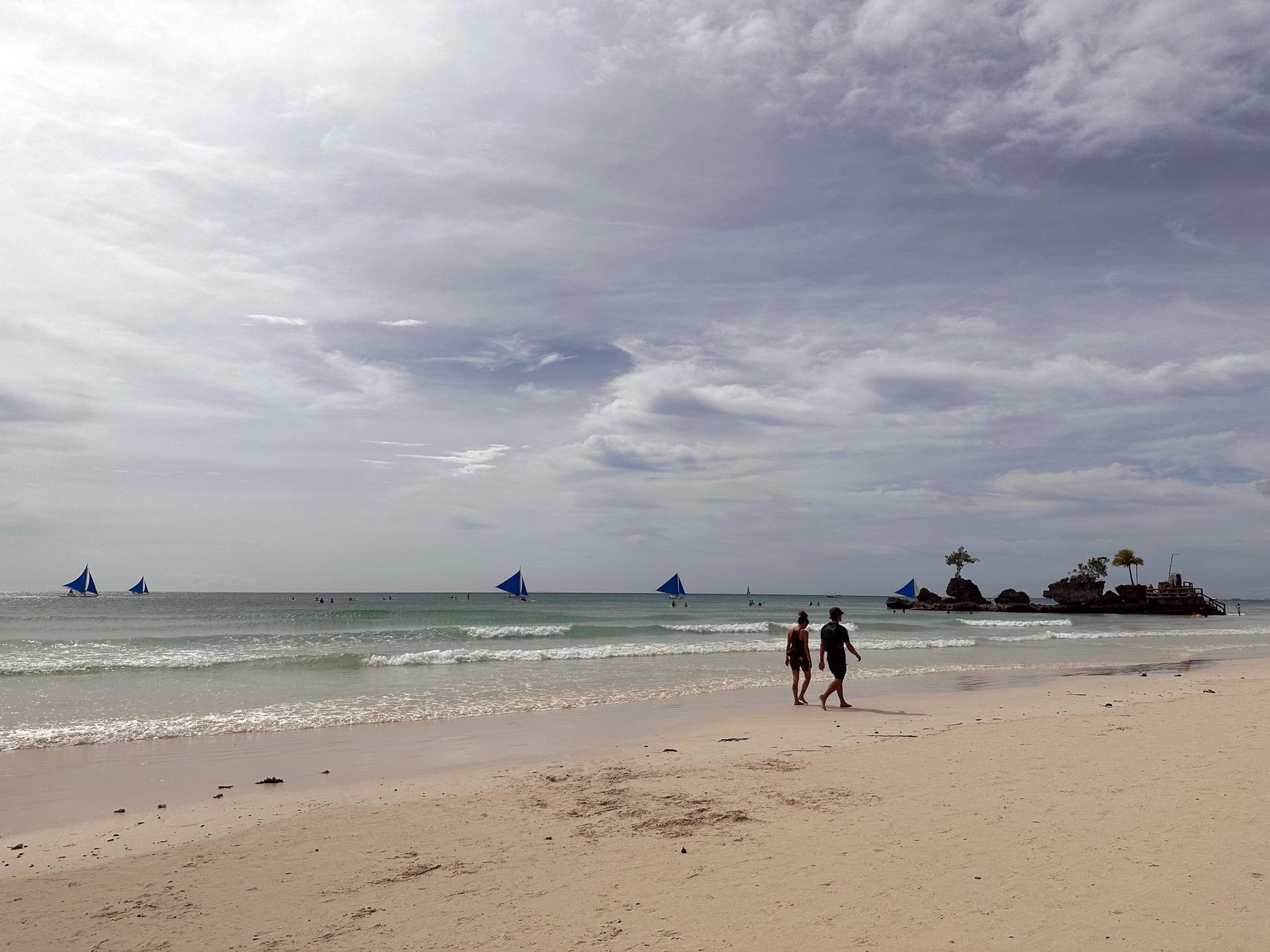The return of Chinese tourists restores hope in the Philippines’ tourism industry
When the Chinese government earlier this month made the decision to relax its pandemic restrictions and allow for travel abroad again, countries that are heavily dependent on Chinese tourism dollars were immediately buoyed.
In the Philippines, where 12% of the economy is tourism-dependent and Chinese tourists were the second-largest market pre-pandemic, the news came as a relief.
The arrival of Chinese tourists “will greatly help us in our effort to transform and recover the tourism industry,” Philippine Tourism Secretary Christina Garcia Frasco told reporters last week when the first plane of Chinese visitors arrived at the Manila airport.
“Our intention is not only to regain our pre-pandemic numbers, but to exceed it,” she said.
‘We are hoping the Chinese will come’
Tourism workers on Boracay Island, the Philippines’ most popular vacation destination, are working hard to prepare for the influx of travelers this year.
Known for its glistening white sand beach, gorgeous sunsets and incredible diving, Boracay saw more than 2 million visitors in 2019, according to the government.
But once the pandemic hit, virtually no one made any money for about two years.
“Maybe we lost, like 80% [of revenue],” Ga Arboleda, manager of DiveGuru’s boutique hotel, restaurant and dive shop said.
She added that once the pandemic took hold, many of her approximately 30 employees wanted to go back to the mainland. So for nearly two years, only she, her husband, their daughter and a couple of other employees ran the business, which barely survived, thanks to the few tourists stranded on Boracay, a special permit they received from the government to stay open and some one-off contracts to teach diving lessons.
“In 2020, we are already happy to get like 500 tourists in Boracay every month,” she said. “It just started to pick up again in the last part of 2021.”

That’s when Filipinos started traveling domestically again. The Philippine tourism industry is primarily fueled by domestic travelers, so once the country started loosening its harsh pandemic restrictions, experts say people launched into revenge travel mode after being cooped up for nearly two years.
In 2022, the Philippine government allowed foreign visitors back into the country and things improved further for the badly battered sector. The provincial government reports that tourism in the Philippines in Aklan Province jumped over 400% between 2021 and 2022.
Arboleda has high hopes for this year. “[From] the tourism point of view, we are hoping the Chinese will come.”
Chinese mass tourism
Phoebe Areno, a tourism official with Aklan Province, said tourism in the region is projected to grow more than 100% in 2023. Between Jan. 1 to Jan. 22 of this year alone, she said, over 125,000 tourists have arrived with a little more than 28% from abroad.
“We are assuming that in the first quarter we are going to receive flights coming in from mainland China,” she said.

The Philippines is banking on Chinese visitors so much that a tourism deal to boost relations with China was signed when the Philippines President Bongbong Marcos visited Beijing earlier this month.
The pandemic paralyzed the Philippines’ burgeoning tourism industry, John Paolo Rivera, the associate director of the Andrew Tan Center for Tourism at the Asian Institute of Management, said. “Because of it, revenues were almost zero.”
So, the potential of Chinese tourists to the Philippines cannot be undermined, he said — and this has specifically to do with the way Chinese tourists travel.
“They go by mass tourism. A huge, huge amount of tourists, and they come by buses, in ships, in planes,” Rivera said.
“But then they’re also characterized as tourists who absolutely spend [a lot] whenever they go to a country, because they spend so much on entertainment and luxury items.”
Pre-pandemic, Chinese tourists racked up some $255 billion in spending and accounted for almost 20% of tourists globally, according to the United Nations’ World Tourism Organization. For Southeast Asia, especially, data for 2019 shows that before the pandemic, Chinese tourists were the leading source of foreign travelers for the region — making up about a quarter of all tourists.
“So, the arrival of the Chinese, yes, it gives hope,” he said.
COVID concerns
Still, Rivera and other experts say the Philippines should be cautious of the impact an increase in foreign tourists will inevitably have — particularly when it comes to the environment and the ongoing pandemic.
Dive shop manager Ga Arboleda laughed nervously when asked if she had any concerns about the expected increase in travelers.
“Well, because we don’t know [if] that virus, again, will arrive if we open the border already to all the people,” she said.
“I’m also thinking about what will happen if we get a new variant and then the vaccine we have will not shield us from that kind of variant.”
Since the start of the pandemic, the Philippines has logged more than 4 million cases of COVID-19 and nearly 66,000 people have died. In preparation for more travelers from China this year, the Department of Health has called for “heightened surveillance” of visitors from there.
Still, only proof of vaccination is required upon arrival in the Philippines for foreign travelers, or a negative COVID-19 test if the traveler is unvaccinated. And even though almost 94% of Filipinos are vaccinated, health experts say, with new variants of the coronavirus on the horizon, more booster shots are still needed.
Trying to make a living and keep her beloved employees safe and healthy is a difficult balance act, said Arboleda, who arranged last week for all of her employees to get their second booster shots.
“Most of our employees are two years or up to 21 years with us, so we really treat each other as a family,” she said.
